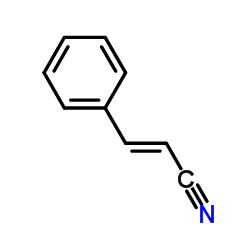Fluorogenic surrogate substrates for toluene-degrading bacteria--are they useful for activity analysis?
Susanne Günther, Wolfgang Geyer, Hauke Harms, Susann Müller
文献索引:J. Microbiol. Methods 70(2) , 272-83, (2007)
全文:HTML全文
摘要
Cultivated bacterial toluene degraders use one or several of four described pathways for the aerobic degradation of this priority groundwater contaminant. To be able to identify un-cultivated toluene-degrading bacteria within enriched or natural consortia, we attempted to develop a set of staining techniques that invariably label toluene-degrading bacteria while differentiating between the different degradation pathways. In the literature, we found suggestions for pathway-specific labels of individual cells that rely on the conversion of toluene surrogates into specific colored and fluorescent products. These surrogate substrates were phenylacetylene (PA), cinnamonitrile, 3-hydroxyphenylacetylene (3-HPA), and indole. We were able to confirm that the chromogenic reactions reliably verified the pathway-specific reactions of well-characterized toluene-degrading bacterial species. However, it was most surprising to find out that three (PA, 3-HPA and cinnamonitrile) of the four supplied surrogate substrates did not lead to any product fluorescence above the cultures' autofluorescence, neither inside of cells nor in supernatants. More disturbingly, the original surrogate compound 3-HPA was inherently fluorescent and found to stain cells at intensities that depended on their states in the cell cycle. Indoxyl originating from the surrogate substrate indole was the only fluorescent product that was formed. It was detected intracellularly when the cells were sealed with para-formaldehyde, but its appearance was unrelated to the presence of expressed toluene degradation pathways. These findings were scrutinized by fluorescence spectroscopy, fluorescence microscopy, and flow cytometry. Activity and growth of the test bacteria were determined by analyzing chromosome numbers and membrane integrity. Our results contradict literature reports that propose the surrogate fluorogenic substrates for the identification of toluene degraders and the identification of specific pathways used by them.
相关化合物
| 结构式 | 名称/CAS号 | 分子式 | 全部文献 |
|---|---|---|---|
 |
肉桂腈
CAS:1885-38-7 |
C9H7N |
|
The spectroscopy and photochemistry of quinioline structural...
2015-08-21 [J. Chem. Phys. 143 , 074304, (2015)] |
|
Reversible targeting of noncatalytic cysteines with chemical...
2012-05-01 [Nat. Chem. Biol. 8 , 471-6, (2012)] |
|
Formation of mercapturic acids from acrylonitrile, crotononi...
1981-01-01 [Drug Metab. Dispos. 9(3) , 246-9, (1981)] |
|
Synthesis and use of an in-solution ratiometric fluorescent ...
2007-01-01 [Nat. Protoc. 2(1) , 227-36, (2007)] |
|
Direct oxidative coupling of benzenes with acrylonitriles to...
2010-09-21 [Org. Biomol. Chem. 8(18) , 4071-3, (2010)] |